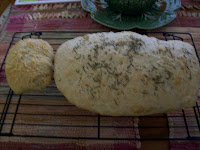Ingredients:
- 4 cups all-purpose flour
- 1/2 teaspoon ground cinnamon
- 1 cup warm water
- 1/2 tablespoon kosher salt
- 1 1/2 teaspoon dry active yeast
- 1 1/2 tablespoon sugar
- 1/4 cup milk
- Combine the flour and cinnamon in a mixing bowl.
- Heat the water to 100F and whisk in the yeast, salt, and sugar.
- Add the water mixture to the flour and cinnamon and then mix on low/medium for about 1 to 2 minutes.
- Add in the milk as necessary to create a smooth, slightly sticky ball of dough while mixing for another 2 to 3 minutes.
- Continue mixing until dough is only sticky like gum you have been chewing for a really long time - by that I mean, it will stick to your hands a little bit when you pick it up, but it will easily come off.
- Knead the dough for 10 minutes on a lightly floured surface.
- Place the dough in a lightly oiled mixing bowl and cover with a towel. Let dough rise in the covered bowl for 1 hour. It will rise a little bit, but mine have not doubled in size.
- Roll out the dough to be as wide as the length of your bread pan and as long as about 1.5 times the length of your bread pan. Then make the maple syrup and brown sugar spread.
- For the maple syrup and brown sugar spread you will need about 1/4 cup maple syrup and 3/4 cup of brown sugar. Mix them together until you get a thick paste. In the two test loaves I have made so far, the spread has "leaked" out of the bread and created a sort of glaze like feature as in the sticky buns which has been great, but I've been hoping to make it more like a swirl on the inside like a loaf of cinnamon bread. So this step might need some playing with in terms of the ratio of maple syrup to brown sugar.

Bake at 350 F for about 35 minutes or until golden brown. I like to check and rotate the loaf after about 20 minutes or so.
Let me know if you try it and how it works for you! Enjoy!























